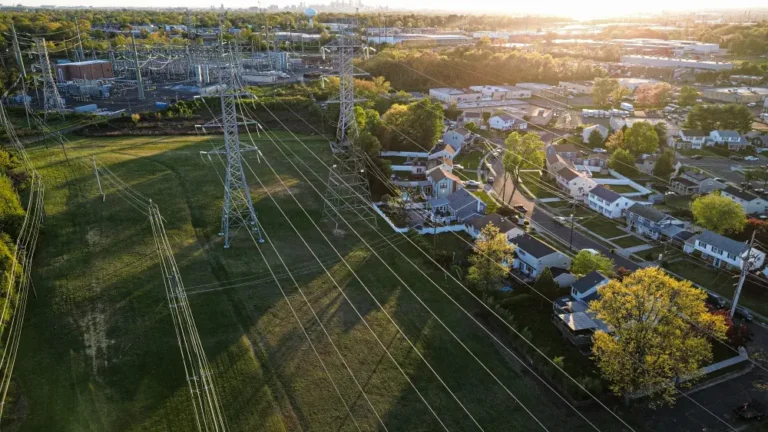How Bank of America trains young grads to work with its richest clients

- Analysts undergo two years of training to work with Bank of America’s wealthiest clients.
- The “apprenticeship model” helps young grads find their specialty before they become associates.
- The course ends with a case study with 15 possible outcomes and choosing one of 25 specialties.
Bank of America has 500 advisors dedicated to its wealthiest clients, each of whom has at least $3 million in investible assets. Working with this coveted clientele begins right after college.
The private bank division, which has $573 billion in client assets, hired 47 analysts this summer, a 75% increase from the previous year. The majority of them are recent college graduates who have previously interned with Bank of America. The two-year training program begins in July and concludes with a case study. At the end of the program, they are promoted to associates and must train for another three years before being promoted to advisor.
The most difficult challenge for these young analysts is not studying estate planning while working or dealing with difficult clients. According to Bank of America’s Jennifer Loughlin Miller, most of these trainees miss the social aspects of college, despite the fact that they are well-versed in remote learning and internships.
“That’s feedback from previous years,” said Miller, the private bank’s head of talent development. “‘Wow, it’s so different being at college and then coming in and really having this corporate experience.'”
The bank has made changes in order to attract Gen-Z trainees. Analysts are always placed in markets with at least one other analyst because previous analysts had complained about not having any peers nearby. While the program has traditionally begun with a weeks-long orientation in New York City, Miller told Insider that a “graduation” event has been added. The graduating analyst class celebrated with a three-day trip to Boston in August, which included a reception at the John F. Kennedy Presidential Library and a duck boat tour of the harbor.
Analysts rotate through four departments before becoming associates. They can choose from one of 25 specialty groups ranging from philanthropy to custom lending for the fourth rotation.
“The full experience of these two years is an opportunity to have this sort of exploratory discovery phase before they dive into their associate role,” Miller went on to say.
After five weeks of training, analysts begin client-facing work.
Private bank trainees begin their careers with a five-week orientation. They spend the first week learning about Bank of America’s history and structure from analysts across the bank. The second week is dedicated to learning the fundamentals of wealth management. The last three weeks are devoted to the private bank’s operations, and executive leaders visit the analysts.
In response to analyst feedback, the trainees practice working with their future teammates more. Analysts brainstorm with their peers and a member of the program team about how they would best collaborate with a trust officer to provide advice to a fictitious client, for example.
They begin the rotation cycle after the orientation, with each six-month shift preceded by a weeklong leadership summit. Each summit includes modules on trusts and estates, lending, alternative investments, and specialty assets, as well as case studies based on actual clients. They have fundamentals lessons such as capital markets and a fireside chat with an advisor about building a book before the first rotation. They are also trained to give presentations and answer questions on the spot. At the end of each summit, trainees are given a “learning notebook” with detailed lessons and a “buddy” within the department.
Analysts shadow top private bank advisors for the first rotation. From the start, trainees will assist clients with tasks such as using the newly revamped private bank app and transferring money. They also conduct client prospect research and identify clients who could benefit from other bank products such as specialty lending or mortgages.
Trainees in this rotation attend an introductory class at Bank of America’s “credit college.” However, there is no homework or testing. Throughout the rotations, they have weekly program calls and mentor calls.
“The whole idea is coaching and feedback,” Miller explained. “It’s less about a pass-fail situation.”
Analysts select a specialty for their final shift after two more rotations.
The following rotation will be with a senior trust officer, where you will assist with estate planning as well as the creation and administration of trusts. In the third rotation, trainees shadow a portfolio manager and build portfolios under supervision. Duties include everything from daily compliance to preparing deck materials for client meetings and researching investments.
Analysts choose one of the bank’s 25 specialty groups for the fourth and final rotation, such as wealth planning, custom lending, structured credit, philanthropy, or the chief investment office. According to Miller, art services, such as assisting wealthy collectors in borrowing against their masterpieces, as well as philanthropy and trust solutions, have grown in popularity in recent years.
The program concludes with a capstone case study in which advisors act as clients. Analysts are given several weeks to prepare for a meeting with a fictitious high-net-worth family that recently sold a business.
Each trainee is given the same profile, but because the case has 15 possible outcomes, the analyst must pivot. For example, the fictional family may not want to pass on their wealth to their four adult children, or they may be highly debt-averse and hesitant to use specialty lending. The case study will not be graded.
The training does not stop with the analyst program. Current associates receive more individualized training, as requested by previous associates. They can enroll in a six- to eight-month “advancement program” that includes a curriculum tailored to their desired role on a private client team, such as portfolio manager.
Bank of America did not specify an advisor headcount target.
“The advisor pathway is important, but then there’s also this trust component, the investment side, philanthropic side,” he said. “It’s really just allowing a conduit to multiple destinations.”






